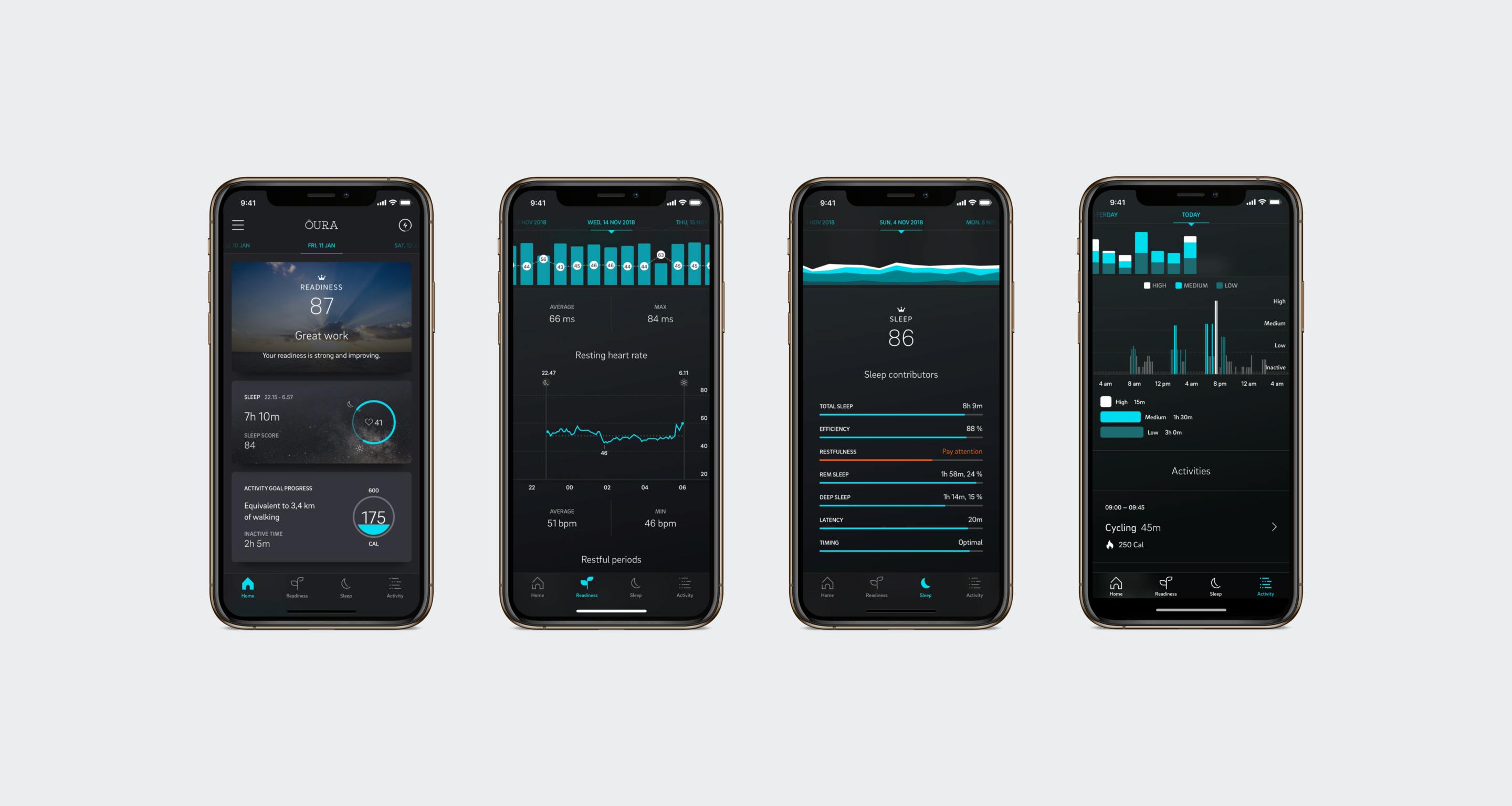Persistent stress is one of the biggest factors in aging and the majority of diseases, both on a mental and physical level. Even though it plays such a key role in our overall health, most people do not know much about it.
According to The American Institute of Stress, it is even difficult to define what stress is. It is not surprising then that a lot of people struggle with recognizing moments when their nervous system is overloaded.

Photo credit: Oura ring
The effects of stress may be more than you think
Besides situational, reactive stress or long-term worry that most of us are aware of, there are other subconscious anxiety responses. These are responses to emotional triggers which we learned in the past, mostly in childhood, and became our habits, or automatic “fight or flight” activations that are a natural reaction to what we perceive as danger, either based on genetic information or past conditioning. Finally, there is also stress stemming from the strain on the nervous system caused by eating the wrong foods, a lack of sleep or overtraining, etc.
How can you measure stress?
The perceived stress is only the tip of an iceberg of what our nervous system is going through, therefore tracking physiological responses to our behavior can help with stress management. Currently, the most optimal and accessible estimation of everyday strain on the nervous system is heart rate variability (HRV). HRV is a measure of variations between intervals of heartbeats within a specific time frame.

Low HRV indicates a switch to faster, more similar heartbeats, so to more stress. In a relaxed state, we usually have a slower and more varied length between heartbeats, which can be quantified by high variability.
What can HRV tell you about your health?
HRV can provide you with information whether you strained your nervous system and need recovery time. It can also give you feedback on the impact of your actions such as a change in diet, taking supplements or medication on your energy levels. Therefore, the HRV-based feedback system not only allows you to acknowledge your stressors but also to validate your stress management strategies. What is more, the measurement does not require any laboratory equipment and can be done and tracked by everyone who buys a wearable with a special infrared optical sensor. Below is a short review of the most popular commercial devices that measure HRV. All of these devices capture HRV during the night (because this allows for the standardization of conditions for comparison) and provide an average value over time.
Oura ring – the most popular health wearable on the market
Oura is a smart ring. Due to the comfort of wearing it, it has become one of the most popular wearables among the health-conscious crowd. In addition to HRV, it tracks many aspects of your well being such as sleep and activity.
The HRV is measured in the context of readiness. The app that comes with the ring gives you information on whether your body has recovered from the previous day’s activities or whether you should take some rest. You can view detailed variations of HRV overnight or the average in a daily, weekly or monthly mode. On-demand, measurements are not possible, but Oura is planning to introduce them this year.

Photo credit: Oura ring

Photo credit: Oura ring
WHOOP – a powerful wearable with a focus on athlete recovery
WHOOP is a wrist strap designed for athletes, which among other measurements, provides data on daily strain and recovery. The strain is calculated from the resting heart rate and everyday activity – several activities can be coded and automatically recognized such as running. The recovery is calculated on HRV, resting heart rate and hours of sleep. The recovery score tells you how well prepared you are for the daily strain. WHOOP calibrates to your physiology and creates your baseline for recovery and HRV. Unfortunately, the device does not have the ability to do one-off readings during the day.

Photo credit: Whoop

Photo credit: Whoop
Biostrap – an advanced health wearable
Biostrap is another wrist strap. It allows tracking activities and viewing of how they affect your HRV. Over 100 activities, from meditation, swimming, to weight training, are programmed in the app as a default.
The following data can be displayed in the app: desirable range for daily HRV index, baseline (average Nocturnal Index HRV value for the past five to 28 days), CV (coefficient of variance – how resilient one is to changes, e.g. physical, emotional – the lower, the higher resilience). The trending graph provides information that HRV is below, at, or above average (if red, it signifies the need for intervention). You can view daily, weekly, monthly and yearly readings. The app provides information on whether you need to recover or not but does not give a recovery score. As in the case with WHOOP, there is no ability to do case specific readings.

Photo credit: biostrap.com

Photo credit: biostrap.com
Other options
For those who want to do manual, one-off readings and do not care that much about other types of data, the best option is to buy a designated device. The majority of these devices are chest straps. There is no leader in this field. What matters is a good app that provides meaningful analysis of data. One of the most recognized apps is SweatBeat HRV that divides data into Stress Monitor, raw HRV and HRV for Training.
If you do not wish to put a chest strap on yourself every time you want to measure your HRV, you can also purchase CorSense. It is a small portable device that reads HRV from your fingertip and displays data in the in-house Elite HRV app.

